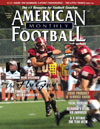Article CategoriesAFM Magazine
|
Managing Team Dynamics - .COMby: Larry Wilsonby: Troy Malone © More from this issue At the end of the day, if the coach isn’t going to manage the team’s internal and external dynamics, then who is? In today’s non-confrontational society where conflict and upheaval are seen as overly-aggressively and negative actions, a large helping of moral courage is required to effectively manage inner and outer team influences; unfortunately, many coaches refuse to address team dynamics, often to the detriment of all involved.
|
|
|||||||
| HOME |
MAGAZINE |
SUBSCRIBE | ONLINE COLUMNISTS | COACHING VIDEOS |
Copyright 2025, AmericanFootballMonthly.com
All Rights Reserved





